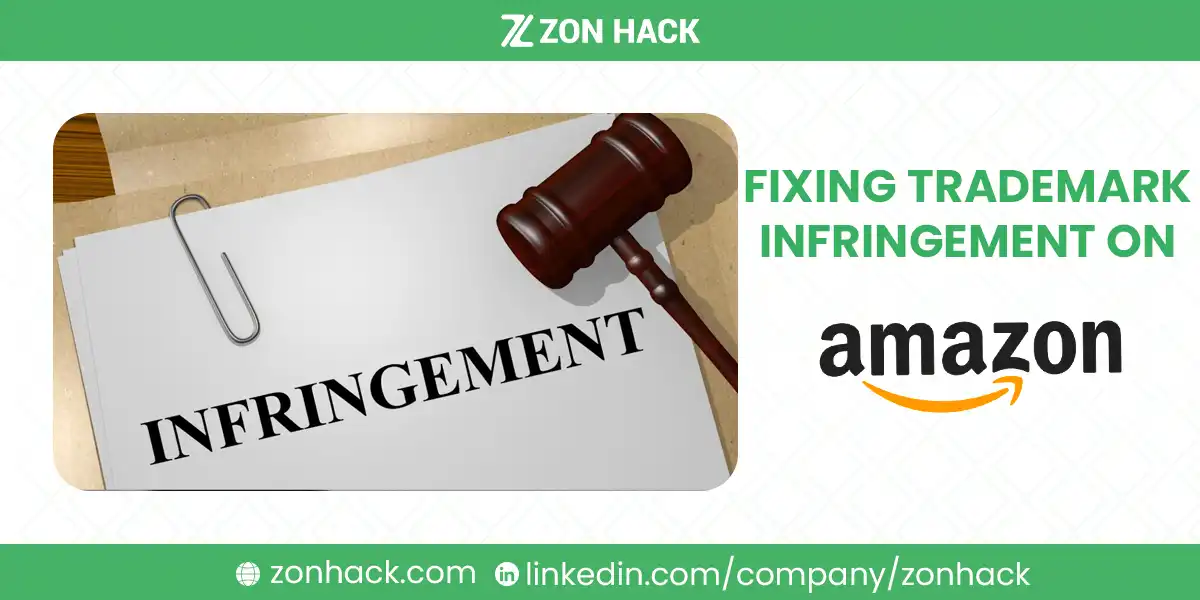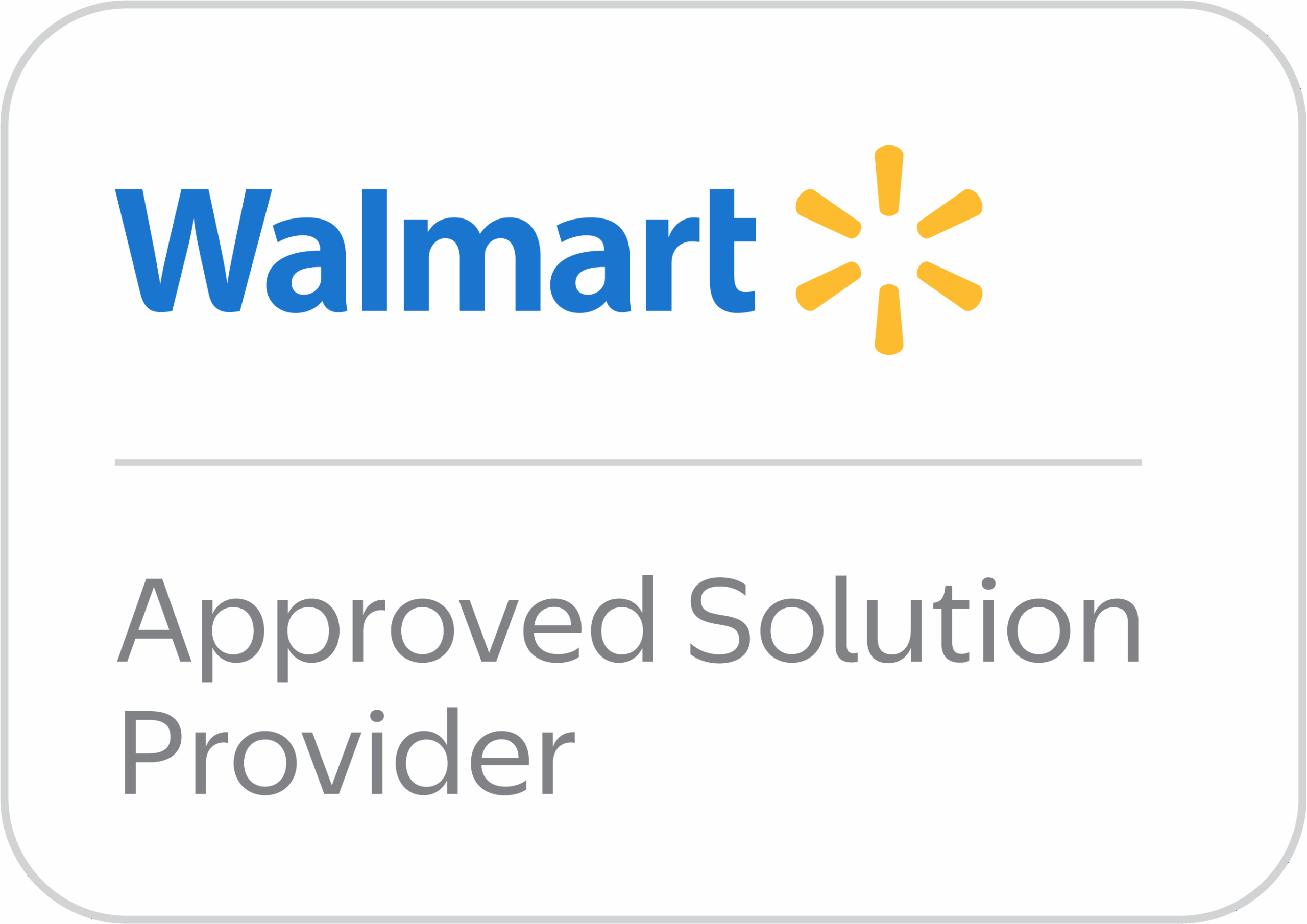Trademark infringement on Amazon is more common—and more serious—than many sellers realize. Whether you’re a growing brand or a third-party reseller, a single misstep can lead to ASIN takedowns, account suspensions, or even lawsuits. And in today’s enforcement-heavy environment, Amazon isn’t waiting around to issue warnings.
This guide breaks down what trademark infringement really means on Amazon, how to fix it if you’re accused, and how ZonHack helps sellers navigate and solve these issues fast.
What Is Amazon Trademark Infringement?
Trademark infringement happens when someone uses a protected brand name, logo, slogan, or product presentation in a way that confuses buyers into thinking they’re buying from the real brand owner. On Amazon, even unintentional misuse of a brand’s intellectual property can trigger enforcement.
Amazon Enforces All IP Violations, Not Just Trademarks
Infringement on Amazon isn’t limited to just logos or product names. Amazon’s policies cover:
- Trademarks: Brand names, logos, slogans, and product packaging.
- Copyrights: Original photos, videos, copy, or artwork.
- Patents: Product designs, features, or technical innovations.
- Counterfeiting: Selling fake or unauthorized replicas of branded items.
Sellers are often surprised to find themselves accused of infringement without realizing they’ve violated any rules. Here’s how it typically happens.
Common Trademark Infringement Mistakes on Amazon
Many sellers fall into IP trouble simply by not paying attention to detail. Some of the most frequent triggers include:
- Listing under someone else’s branded ASIN, even when selling a “similar” product.
- Using brand names in titles or backend keywords to attract traffic, without permission.
- Selling a private label item while claiming it’s from a known brand.
- Using logos or lifestyle images owned by another brand.
- Suggesting brand affiliations that don’t exist, like “compatible with Apple,” without proper disclosures.
- Reselling expired, opened, or unauthorized products under the original brand name.
- Piggybacking on brand-registered listings without being an authorized distributor.
Even if the product is technically “authentic,” the way it’s presented can still violate trademark rights.
Why It’s a Big Deal (and Getting Bigger)
Trademark infringement isn’t just an Amazon issue—it’s a legal one. Under the Lanham Act, unauthorized use of trademarks is a federal offense. But what makes Amazon unique is how quickly and aggressively it acts on infringement reports.
Here’s What You Risk:
- ASIN removal or listing suppression within hours of a claim.
- Account suspension, often without prior notice.
- Permanent black marks on your account health, even if resolved.
- Legal action from the brand owner, including lawsuits or cease-and-desist letters.
- Loss of sales and ranking, even if the product comes back.
According to Amazon’s Transparency Report, the company seized and destroyed over 6 million counterfeit products in 2023, and trademark violations made up a significant portion of enforcement cases.
In other words, enforcement is real, fast, and unforgiving.
Trademark Owners: How to Fix and Prevent Infringement
If you’re a brand owner on Amazon—or even just in the process of becoming one—trademark protection is your foundation. Amazon has given you powerful tools. But you have to use them.
Step 1: Enroll in Amazon Brand Registry
Brand Registry is your gateway to enforcement, control, and protection.
Once enrolled, you can take full ownership of your listings, block hijackers, and report IP violations. To qualify, you’ll need:
- A registered or pending trademark (text or image-based).
- A matching brand name on your products or packaging.
- An Amazon seller or vendor account.
Pro Tip: Use Amazon’s IP Accelerator if you don’t yet have a registered trademark—it gives you early access to Brand Registry while your application is still processing.
Once enrolled, you unlock powerful enforcement tools:
- Report a Violation (RAV): Flag infringing listings quickly.
- Project Zero: Automated takedowns for known counterfeits.
- Transparency: Product serialization that blocks fake listings.
- APEX and Utility Patent Neutral Evaluation: Resolve patent disputes efficiently.
Step 2: Monitor for Infringement
Just because you’re enrolled in Brand Registry doesn’t mean you’re fully protected. Ongoing monitoring is critical. Look out for:
- Suspicious edits to your listings.
- Sellers offering your branded items at unusually low prices.
- Mismatched product images or titles that dilute your brand identity.
Tools like Brand Analytics, third-party platforms help flag violations early, before they cost you sales or reputation.
Step 3: Report the Violation
If you spot misuse, report it promptly through Amazon’s “Report a Violation” tool or the generic Report Infringement Form (if not Brand Registered). You’ll need:
- Your trademark registration details (USPTO or WIPO).
- URLs or ASINs of the infringing listings.
- Screenshots or photographic evidence of the misuse.
If you work with ZonHack, we can help you move to the right direction. Cases submitted through an IP attorney are statistically more likely to be resolved quickly and in your favor.
Step 4: Escalate if Necessary
If Amazon doesn’t act—or the infringer continues—you may need to take legal steps:
- Send a cease-and-desist letter.
- File a DMCA takedown if copyrighted content is involved.
- Pursue litigation under the Lanham Act for recurring infringement.
- Use Amazon’s Utility Patent Evaluation Process (U.S. only) for patent conflicts.
If You’re Accused of Trademark Infringement
Getting hit with a trademark complaint can be terrifying, especially if it results in an immediate takedown or account suspension. The key is to stay calm and act methodically.
Step 1: Don’t Panic—But Don’t Ignore It
Trademark claims can come from Amazon’s automated system, law firms, or directly from brands. Ignoring them is the worst mistake you can make.
- First offense? You may get a warning or listing removal.
- Multiple claims? You could be suspended permanently.
Step 2: Identify the Type of Infringement
Understanding what you’re accused of is crucial. Was it:
- Unauthorized use of a brand name in your title?
- Use of a logo or image that belongs to another company?
- Listing under a branded ASIN without being an authorized reseller?
- Selling a product Amazon deems counterfeit or unverified?
Knowing the category of violation helps shape your appeal.
Step 3: Investigate and Collect Proof
Documentation is everything. Gather:
- Invoices from suppliers, ideally dated and with matching SKU info.
- Authorization letters from the brand (if applicable).
- Screenshots of your listings before and after takedown.
- Any legal correspondence you’ve received.
If you’re sure your product is genuine, prove it with official paperwork. ZonHack often helps sellers prepare this documentation as part of a reinstatement strategy.
Step 4: File an Appeal with Amazon
Go to the Account Health dashboard and submit a Plan of Action (POA). This isn’t just a formality—Amazon takes it seriously. A good POA includes:
- Root Cause: What caused the infringement.
- Corrective Actions: What you did to fix it.
- Preventive Measures: How you’ll avoid this in the future.
If the claim came from a rights owner and you believe it was made in error, politely contact them and request a retraction. If it was a copyright claim, you might be eligible to file a Counter-DMCA.
Step 5: Clean Up Your Listings
Once resolved, it’s time to prevent repeat issues:
- Remove any trademarked terms unless you have permission.
- Relabel or repackage unbranded goods.
- Consider switching to generic branding if you can’t obtain authorization.
- Delete problematic SKUs if correction isn’t possible.
Preventing Future Trademark Infringement
Once you’ve resolved an infringement issue, the next—and most critical—step is prevention. Amazon doesn’t tolerate repeat violations, and a second offense could mean permanent suspension or worse. The good news? Most trademark issues are completely preventable if you follow a clear compliance strategy.
Best Practices for Amazon Sellers
Whether you’re a reseller or private label seller, you need to create a checklist to stay on the right side of Amazon’s IP rules.
First, vet your suppliers carefully. Always request itemized invoices that meet Amazon’s authenticity criteria—this includes details like supplier name, contact info, and purchase date. Invoices from marketplaces like eBay or Alibaba aren’t considered reliable by Amazon.
Next, avoid using trademarked brand names in your titles, bullet points, or backend search terms unless you’re officially authorized. Even something as minor as “Compatible with Apple AirPods” can land you in trouble if you’re not careful. In that case, you should use phrases like “fits AirPods (not affiliated with Apple)” to clarify you’re not claiming a direct connection.
Also, make it a habit to audit your listings monthly. Check your:
- Product titles
- Bullet points
- Backend keywords
- Images and packaging
If you’re using a team—like virtual assistants or listing editors—train them on IP compliance. Many infringement cases are unintentional but happen because someone used a copyrighted image or brand name without realizing the legal implications.
Best Practices for Brand Owners
Brand owners have a bit more control, but that doesn’t mean they’re immune. You still need to be proactive.
First, stay enrolled in Amazon Brand Registry. It’s your gatekeeper for brand protection and gives you tools like:
- Project Zero for automated counterfeit takedowns
- Transparency for product serialization
- Brand Analytics for listing visibility and competitor tracking
Monitor competitors and unauthorized resellers frequently. If someone is “piggybacking” on your ASIN and selling expired, counterfeit, or used versions of your product, file a report fast. The longer it sits, the harder it becomes to prove damages.
Why Prevention Matters
Many sellers don’t realize that resolved trademark disputes don’t disappear instantly. In fact, a resolved claim can continue to affect your Account Health Score for weeks or even months. Worse, repeat violations—especially across different ASINs—can trigger automated suspensions.
And remember: Amazon keeps internal records even if they reinstate your listing. You’re building a long-term risk profile. The more strikes you accumulate, the less patient Amazon becomes.
ZonHack Can Help You Fix Trademark Infringement
If you’re reading this and dealing with a trademark issue—or you want to avoid one in the future—ZonHack is built for sellers like you.
Trademark infringement cases are complex. They often involve legal nuances, multiple Amazon departments, and even third-party rights owners. ZonHack’s team of Amazon-trained specialists simplifies the chaos and gives you a clear path to resolution.
How ZonHack Solves the Problem
We offer a step-by-step infringement recovery plan. This includes listing audits, identifying problematic keywords or branding elements, and guiding you through what needs to be changed.
If you’ve received a notice or your ASIN has been removed, we’ll help you draft a custom Plan of Action (POA)—not just a generic template. Every POA includes:
- A deep dive into the root cause of the infringement
- A list of corrective actions taken (like removing keywords or changing packaging)
- Preventive measures you’ve put in place to avoid future issues
We also serve as a liaison with rights owners and Amazon legal teams to negotiate retractions or provide clarification if a claim was filed in error.
And if your account is at risk, we act fast. We’ve helped hundreds of sellers reinstate listings and accounts—often within days.
Bottom Line: Fixing Trademark Infringement on Amazon Isn’t Just About Compliance—It’s About Survival
Trademark infringement on Amazon isn’t rare, and it isn’t always malicious. But the penalties are harsh, often automated, and potentially permanent.
As an Amazon seller, your listings are your lifeline. One trademark claim can wipe out weeks of ad spend, derail your sales momentum, or even trigger account shutdowns. And the worst part? You may not even know you violated a trademark until it’s too late.
That’s why ZonHack was created—to protect, defend, and reinstate sellers with everything from rapid-response POAs to end-to-end compliance support.
If you’ve been hit with a trademark claim—or want to avoid it altogether—ZonHack is ready to help.
Frequently Asked Questions
What should I do if I get a trademark infringement warning from Amazon?
Respond immediately. Don’t delete the message or wait. Investigate the claim, gather documentation, and submit a Plan of Action. ZonHack can help you do this the right way.
Can I use a brand name in my listing if I’m not affiliated?
Generally, no. You must avoid using registered brand names unless you’re authorized. You can say “compatible with” but clarify there’s no official affiliation.
How long does it take to resolve a trademark case on Amazon?
It varies. Simple cases can be resolved in 2–5 days. More complex disputes may take 1–3 weeks, especially if you need to contact the rights owner or involve legal counsel.
Will Amazon notify me before removing my listing for infringement?
Sometimes yes, sometimes no. If they receive a valid complaint, they can remove a listing or suspend an account without prior warning.
Can I appeal directly to the rights owner?
Yes, and it’s often the fastest resolution path. ZonHack can help you write a professional outreach message or negotiate a retraction.




